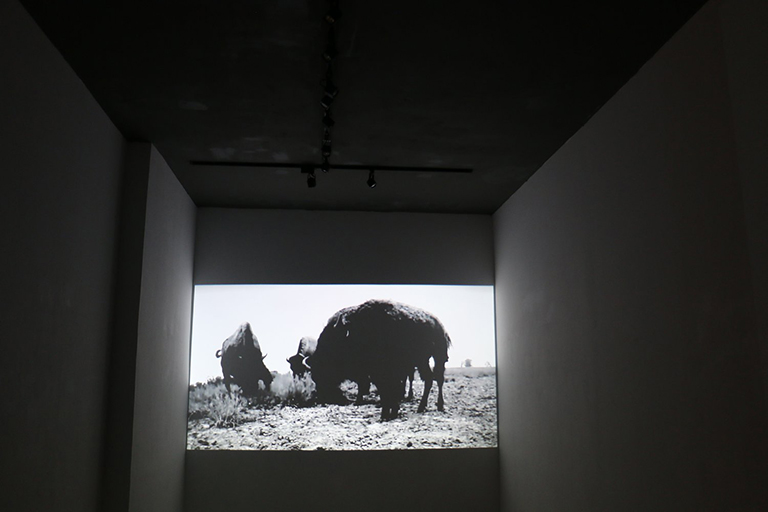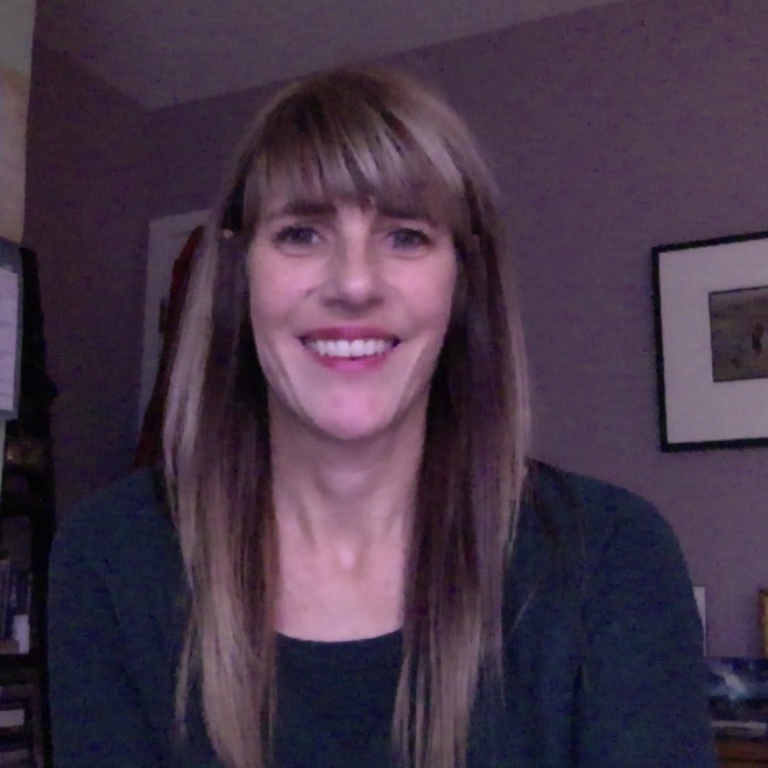Western culture has long driven an intellectual wedge between humanity and the natural environment, a cognitive separation that has contributed to generations of environmental degradation and, ultimately, climate change.
As the ERI Artistic Social Practice Fellow, Maria Whiteman uses art to tell stories about the interconnectedness of all living organisms and the oftentimes brutal disruption that human activity brings to natural relationships.
In November, Whiteman’s work is on display at the IU Grunwald Gallery of Art and the Evansville Museum of Arts, History and Science. Her piece Traces of Another Time in the Landscape examines the terrain of Western Canada through memory and touch, linking the geological history of the land with the present day. (Visit Whiteman’s website to see more of her exhibitions.)
Whiteman recently spoke with the ERI Explainer about the role art can play in helping people connect to the environment.

The Explainer: Why is art a good entry point for people to engage with the environment and how does your recent work invite people in?
Whiteman: I think what art can do is make visual links between science, environmental change, and other concepts that can reach the public in this aesthetic, emotionally appealing way.
Traces of Another Time in the Landscape captures a landscape through touch and memory. I wanted the viewer’s gaze to be on the hand caressing a stone called “rubbing rock.” The camera follows the hand between crevices and curves formed by the traces of the bison’s movement between grass, wallows, and rock. The bison are the forgotten memory and emotion.
The video has a dream-like quality, which suggests a glimpse to the past by zooming in on the legendary impressions left behind on rubbing rock. It becomes an assemblage of images: hand, bison, rock, melting ice, river, lichen, and grass, linking the present ecology to the anthropogenic landscape.
The various erratic stones left behind on Nose Hill date back 15,000 years during the retreating ice age when the tectonic plates lined up and the ice melted, leaving stone deposits on the hill. The images transition from Nose Hill to Mount Rundle, Tunnel Mountain and the Bow River in Banff, Canada, characterizing another time in the landscape. Therefore, the link to geologic time is expressed in the rock formation and striation of an ice age where rocks and vegetation changed because of the retreating ice and the movement of glaciers.
The Explainer: Your work seems heavily informed by history and science. Have those elements always interested you?
Whiteman: What attracts me to the sciences is learning about the environment through a scientific lens and the opportunity to collaborate with talented and creative researchers. Biologist often remind me of artists. They have to be inventive and creative, and they have to ask questions all the time.
For example, right now I am working on fungi—specifically, mycelium and hyphae, which are small, stringy threads that form a rhizomatic network as part of the symbiosis exchange between fungi and trees. I’m collaborating with Katie Beidler, a PhD student in Richard Phillip’s lab who is researching mycorrhizae.
It is fascinating to work with a scientist like Katie who is observing and investigating organisms by looking closely at mycorrhizae and how they react to different types of soil, weather, and levels of moisture or dryness. When you see a mushroom surface above the leaves in the forests, you are witnessing a fruiting body of some type of fungi species, and it’s attached to a tree, and vice versa, in ways we never imagined.
What fascinates me about fungi are their significance to trees and plants. You have tiny organisms underneath the forest floor feeding trees and plants. When you think about climate change and everything that’s affected, you don't have to see pictures of polar bears in the Artic to visualize the impact, which oftentimes seems so removed from us. We just have to learn to pay more attention to the organisms underneath the forest floor, right underneath our feet when we walk in the woods.
The Explainer: As ERI’s Artistic Social Practice Fellow how have you incorporated the Indiana environment and landscape into your work?
Whiteman: That's why I started thinking about mushrooms. When I'm living somewhere new, I start by walking around, looking at the landscape and familiarizing myself with the environment. How do I connect to it and how do other people connect to it? For me, I found the local landscape in Bloomington was really about fungi and trees. Fungi turned out to be so fascinating and intriguing. They became a world I wanted to learn about.
I spend a lot of time walking around Griffey Lake and the wooded areas around Bloomington. I walk on the trails every day, and I’ve become familiar with the fungi in this area.
The Explainer: Historically, art has drawn attention to the beauty of nature. Today, it's harder and harder to ignore humanity's impact on the natural world and the degradation of the environment. As an artist do you feel a responsibility to tell that story?
Whiteman: Yeah, I do. There's obviously a whole history of art around landscape. Some of the great artists from the Romanticism period in art, like the Hudson River School and the Barbizon School, are my favorite painters. They painted dreamy landscapes that have been imprinted in my brain. The period of the “sublime landscape.”
Then much later there's earth art and eco-art, different movements focused on the land. I see myself as part of these genres, especially in thinking about the anthropogenic landscape, our environment, and the human impact on our planet. I also need to mention photographers like Ansel Adams who captured another form of the sublime landscape and more current photographers like Edward Burtynsky and Jeff Wall. All of them have influenced my work.
As an artist in social practice, there's a different edge to my work. It's not so much about turning landscapes into the sublime to elicit this kind of awe. It’s about an awareness of chaos, showing how there is chaos in our landscape. Our landscape isn't just this beautiful construction. It doesn't mean that beauty isn't there, but there are realities that are important to recognize.
The ERI Explainer poses questions on environmental change and resilience to IU experts. Got a question for the Explainer? Send an email to eri@iu.edu with “Explainer” in the subject line.



